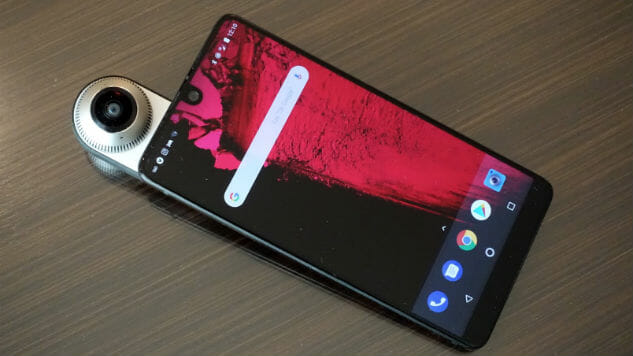
Built out of a ceramic back and titanium sides, Android founder Andy Rubin’s Essential startup’s eponymously named smartphone gets top billing in craftsmanship, eschewing the pedestrian aluminum and glass components on most modern flagships. The luxuriously crafted hardware is a marvel to behold and hold, and Essential is picking up the torch of the old Vertu, a spinoff of Nokia that once commanded prices upwards of $5,000 for its devices, which were clad in precious metals worthy of jewelry. Yet, despite its luxurious exterior, the Essential Phone is a largely understated phone, available in either an all-white finish or a mute jet black colorway.
I had the opportunity to use the Essential Phone as my daily phone over the past two and a half weeks, and in that time, the device has seen price cuts by as much as $200 from its original launch price of $699. Our review ratings today are based on the value that Essential brings to the Android space at its new $499 price point.
Design
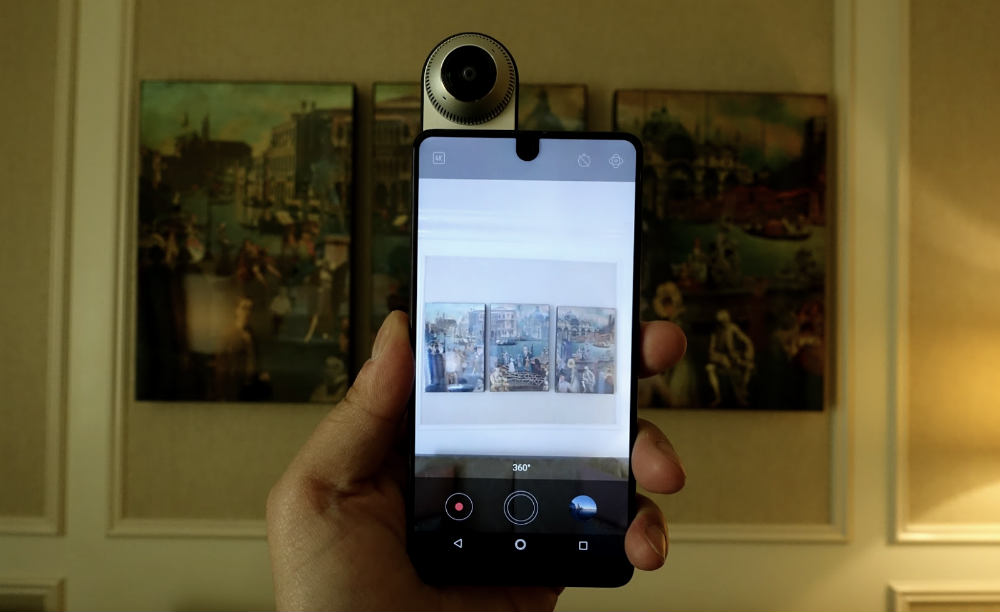
As the original phone with a notched design, the Essential Phone beats the iPhone X’s launch by a few months. The phone was announced in the spring, and delays forced Essential to miss its original launch timeline. When it was available in August, the Essential Phone delivered on a design with bezel-less top, right and left edges, with a slight chin on the bottom of the device. This near-bezel-free appearance gives it an appearance not unlike Dell’s Infinity Display on the XPS 13 laptop, and it is striking in appearance. There is a U-shaped cutout at the top—the phone’s notch—that houses the 8-megapixel front-facing selfie camera.
Along with the notch, just above that is a very thin slit that’s concealed between the glass display and the titanium railing for the earpiece speaker and an LED notification light. The thin slit does a fantastic job of keeping the Essential Phone’s clean lines, but if you have lint-filled pockets, the downside is that the design traps lint and other pocket fuzz in the speaker opening.
The phone has a very modern appearance with straight edges and slightly curved corners. The device takes on a boxy appearance, but its 7.8mm of thinness does a good job of making the phone not feel like a brick. The front of the device is covered in Corning’s Gorilla Glass 5. The device has a 5.71-inch LCD panel with a 2,560 × 1,312-pixel resolution, giving the device a 19:10 aspect ratio. The LG V30 and the Samsung Galaxy S8, for example, both use AMOLD screen technologies with an 18:9 aspect ratio. The result is that the Essential Phone feels slightly wider in the hands, but the new 19:10 aspect ratio along with the bezel-free design make the phone feel much more compact for single-handed use than 16:9 phones from last year.
And while the phone comes with a sizeable screen with a high resolution, it’s not rated as Daydream VR-ready, so you can’t use the Essential Phone for virtual reality games and applications with Google’s headset.
The sides are constructed of titanium, and despite its slippery smooth backside, the rear isn’t made of glass. Instead of the glass sandwich design used by Apple’s iPhone 8, LG’s V30 and Samsung’s Galaxy S8, Essential is forging its own path with a rather unique ceramic back. Ceramic, according to the company, is more durable, but in the hands, the effects are very similar to glass. My black review unit shows all smudges and fingerprints, and when placed on a flat surface, my Essential Phone is prone to sliding off the table all on its own. The upside is that the slick feel makes it easy to slide the phone in and out of your pockets, but if you have butterfingers, getting a third-party case is recommended as Essential, unlike Huawei, doesn’t bundle one in the box.
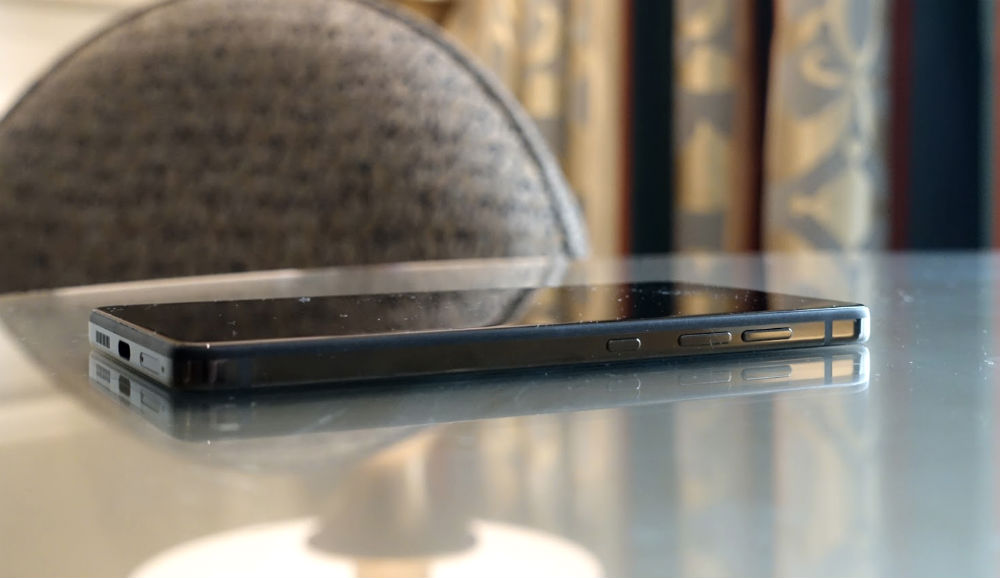
During my testing, the Essential fell off a short table and face planted itself onto a tiled floor, and it survived unscathed, perhaps a testament to the the added durability of the materials used. A similar accidental drop several years ago on my Galaxy S6 Edge with its aluminum sides resulted in a heavily marred corner, but the Essential showed no signs of battle wounds here.
And while the phone isn’t waterproof, it can survive a splash thanks to the IP54 rating for water and dust resistance.
On the bottom, there is a USB Type-C port that accepts fast charging—wireless charging isn’t built into this phone—along with a mono loud speaker, nano SIM tray and a microphone opening. The Essential Phone has a respectable battery life, and is able to last a full day of use without any issue during my testing.
Given that the SIM tray is sandwiched between a small hole to depress to eject the SIM card and the microphone opening, users should pay close attention to not insert the SIM ejector tool into the microphone slot.
Dual cameras and a center-mounted fingerprint scanner are found on the rear of the devices. Additionally, the Essential Phone also comes with POGO pins on the back, which is used to magnetically attach modular accessories that augment the features of the phone. At launch, the only available accessory available is a 360-degree camera attachment, which Essential claims is the most compact 360-degree camera of its kind.
Cameras

The Essential Phone comes with two 13-megapixel cameras on the rear. There is an f/1.85 RGB sensor for color and a second monochrome camera. The camera is a mixed bag on the Essential Phone for several reasons, but the company has aggressively been updating the phone’s software and camera app to improve camera performance.
First, Essential’s camera software is basic, giving you three modes—Auto, which captures color photos, a monochrome mode for black and white shots, and a video recording mode. The cameras can’t be used in tandem, like on Huawei’s phones, to merge images from both sensors to add more details to photos, nor can it be used for fake bokeh effects driven by software algorithms. Essential promises that a portrait mode is coming in the future, but a timeline was not given. Pro-shooters won’t benefit from more advanced manual controls at this time, so you’ll have to rely on Essential’s camera software full-time. Other smartphone manufacturers come with a pro mode that allows for manual adjustments of white balance, shutter speed and ISO.

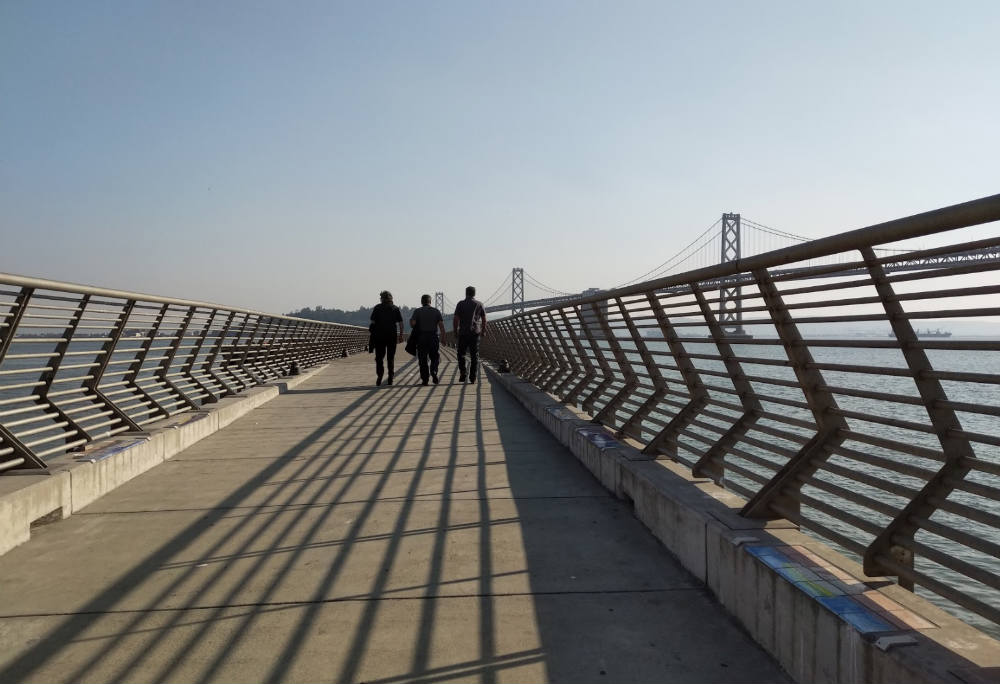

The positive thing about the camera is that it comes with a dedicated monochrome sensor, which can be useful for those who prefer the black and white look without having to apply a filter for those shots. The camera does a good job in this mode and is a good alternative for Huawei’s dual-camera phones, which aren’t common yet at this point for the US market.
Overall, the Essential Phone does a good job with its camera setup, though with a smaller aperture than many competing flagships, it can struggle with low light performance. If you prefer, there is a dual-LED flash on the back to help illuminate your subject in darker environments.
While the built-in dual-lens setup of the Essential Phone may not be able to top smartphone photography charts, the $179 optional 360-degree camera module was a blast to use. Photographers and videographers will be able to tell compelling 360-degree visual stories for VR with the camera, which comes with two 12-megapixel camera sensors and four microphones. The accessory magnetically snaps onto the back of the phone and draws power from the POGO pins, but it transmits data wirelessly. To keep the whole setup cool, the attachment comes with its own fan, and you’ll be able to hear a slight whirring when it’s attached.
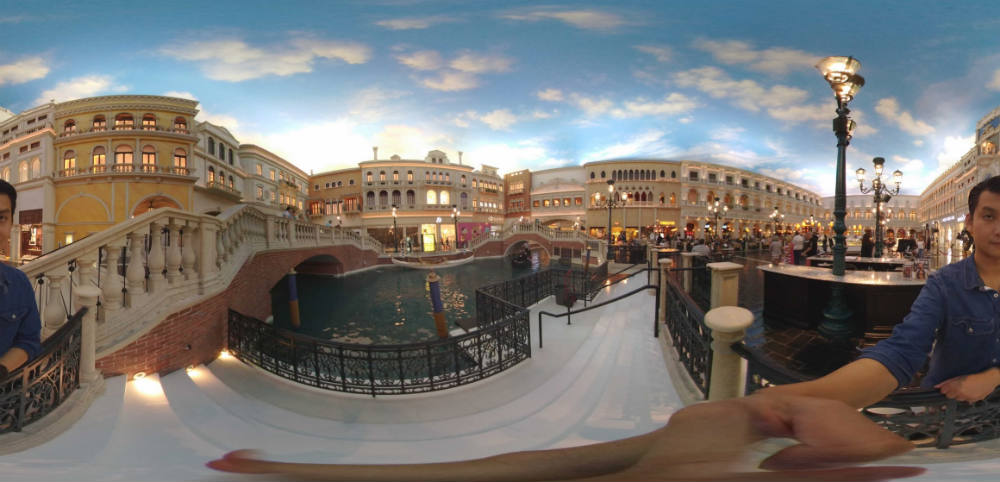
When I snapped the attachment on, the 360-degree camera launches—the interface is very similar to the camera app on the phone, and you can use your fingers to pan around your shot in real-time using the phone’s display as a viewfinder—and removing the camera closes the 360-degree capture app. The process of launching the app is a bit slow, and if you turn off your phone’s display while the accessory is still attached, you’ll have to remove the accessory and re-attach it to get the 360-degree capture app to work again. Essential has released several software updates to improve the camera’s performance while I was reviewing the phone, which improved the launch of the 360-degree camera app when the accessory initially attaches, but I wish the experience was more seamless.
If you haven’t used a 360-degree camera while traveling, it’s a great tool to capturing the world around you—literally—and your selfie at the same time. If you’d rather not be front and center in your 360-degree capture, the software UI now comes with a timer mode, so you can mount the phone to a tripod. I had the chance to test the 360-degree camera attachment on recent trips to Las Vegas and Japan, and the camera works great when there is plenty of light. Overall, the software does a good job of stitching images captured from the front and the rear cameras together with minimal banding, even when the lighting condition changes in the shot. In low light, there is quite a bit of noise, but the images still exceeded my expectations.
Performance & Software
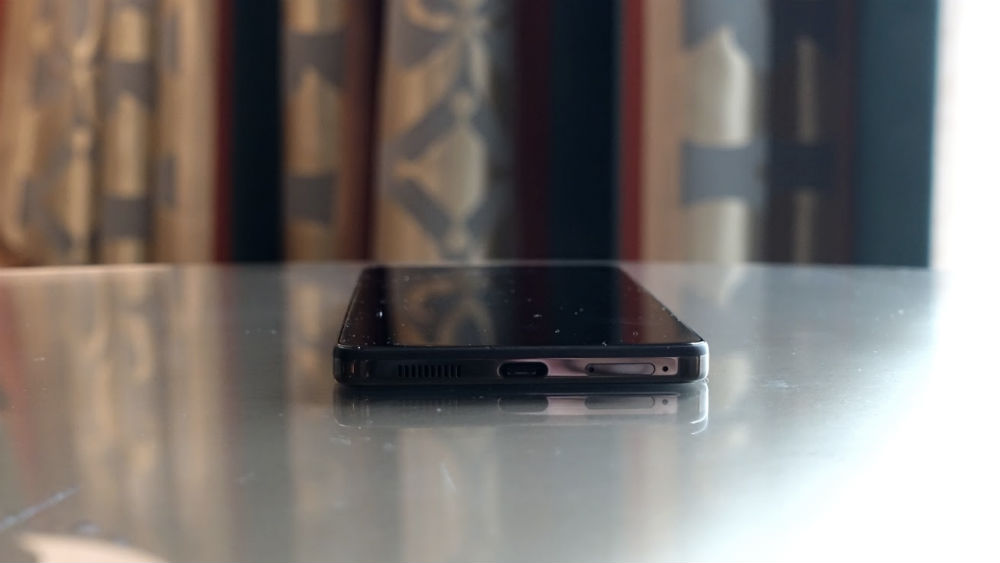
With the latest software updates applied, performance of the Essential Phone is very speedy. The phone ships with mostly a pure Android experience, and, unlike many other Android phones in this space, is devoid of the bloatware that hogs memory and slows down the phone over time. Like many recent flagships, the Essential Phone ships with a Qualcomm Snapdragon 835 processor along with 4GB RAM.
For storage, you’ll find 128GB standard—a rarity for Android phones—but there isn’t room for a microSD card to grow in the future. You’ll instead have to rely on the built-in memory and the cloud if your storage needs extend past what Essential gives you.
During my testing of the phone, I found the Essential Phone to be very fast and fluid, suffering no lag or stutter, and performance is very comparable with devices like the LG V30 and the Huawei Mate 9. Given the lack of bloatware on the phone, I expect the phone’s performance to be consistent over the life of the device.
Essential did apply a few tweaks to the phone, making it stray ever so slightly from a pure Google experience device like a Nexus or Pixel phone. The camera UI is all Essential, for example, and there is a monochrome screen to display notifications when you lift the device up. This display is useful, but I wish Essential would have implemented an always-on LCD display for notifications and showing the time, similar to what LG did with its V6 earlier this year. There is no double tap to quickly turn on the screen, so unfortunately, you’ll either have to hit the power button on the side or pick up the phone, if it’s sitting on the table, to activate the rear-mounted fingerprint scanner. The camera, fortunately, could be launched quickly, by double pressing the power button.
At the end of the day, Essential gets you pretty close to the stock Android experience, relying on Google’s apps for most things.
Keeping the Status Quo
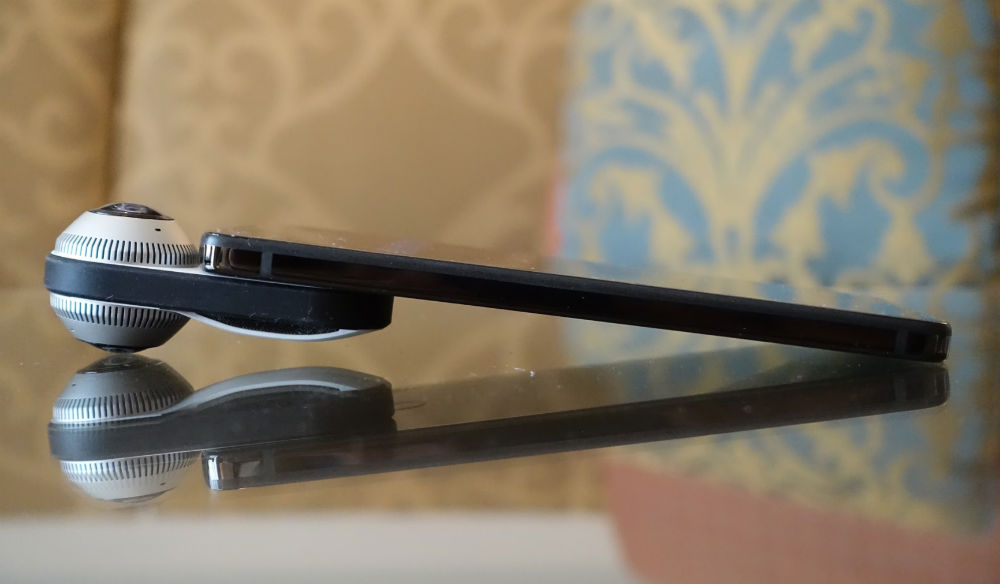
While Essential should be lauded at keeping bloat off its phone, I question the company’s strategy in moving the needle when it comes to Android. Rivals LG and Samsung, for example, have been criticized for being heavy handed in their approach to Android, but in loading their phones with features, they have helped Google adopt some of their innovations in future releases of Android. An example is multi-window multitasking, which was pioneered by Samsung and LG only to be adopted as an Android release feature.
I think Essential can bake in more user-centric features and innovations while still staying true to the Android experience envisioned by Google without resorting to heavy skins and themes. The company proved it can do this by developing the 360-camera app, and given that this phone comes with Andy Rubin’s startup, I would have loved to see more innovations on the software side.
A big missed opportunity that Essential could have leveraged is to develop software to allow apps to stretch to fill the entire screen. While some apps can fill the screen, many do not, and instead, you’re left with letterboxing at the top and bottom. Fortunately, at this time, the letterboxing is somewhat useful—the top black bar houses the notification bar, while the bottom is where you’ll find the on-screen Android navigation keys. Compared to the nearly all-screen Galaxy S8, Samsung made more of an attempt to fill its display, allowing even videos to zoom in and fill the screen to avoid unsightly letterboxing on the left and right edges of the screen, given the ultra-wide display ratio in landscape mode, and Essential could have made similar moves to allow third-party apps to take advantage of the phone’s larger display.
The upside to being minimal—even in its software enhancements—is that the Essential Phone receives very timely software updates. Essential so far has updated the software several times, and the company continues to make meaningful improvements to its camera app. Hopefully, this trend will continue in the future.
Verdict

The Essential Phone is a basic black phone with a lot of promise. In a smartphone market that’s built for mass market consumption, Essential’s choice of titanium and ceramic makes the company’s offering feels more like the haute couture of technology. Its minimal design is understatedly elegant, its all-screen display is stunning and the phone feels much more expensive than it actually is. It’s an impressive slab that feels solid in the hands.
Even though the Essential Phone lacks some of the bells and whistles of its premium-priced competitors—there isn’t an always-on display and a portrait mode camera isn’t yet available despite the dual-lens setup—the device still ticks off enough boxes to make it an excellent phone, especially in light of its new $499 price. The phone’s durable construction, sleek 360-degree modular camera attachment and dedicated monochrome mode make it a joy to use.